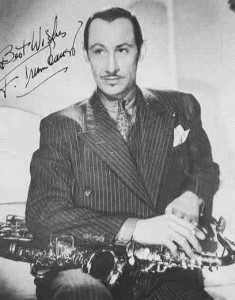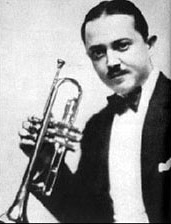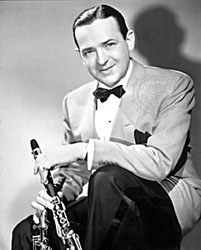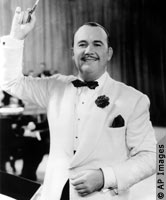Revered as America’s number one dance bandleader in the 1920s Paul Whiteman was committed to providing "something for everyone" with his approach to popular music. And he did just that with a program of waltzes, theater pieces, Tin Pan Alley tunes, light classical numbers and foxtrots.
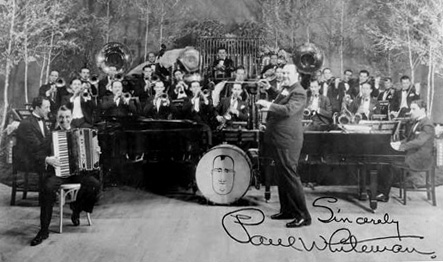
Paul Whiteman Orchestra. Photo courtesy wikimedia.
But Whiteman scored a huge triumph when he commissioned and introduced George Gershwin’s cutting-edge 1924 composition, "Rhapsody in Blue." Based on this success and the popularity of his dance band, press agents crowned Paul Whiteman the 'King of Jazz.'
In spite of the title Whiteman knew that very little of his orchestra's repertoire qualified as jazz. To correct that discrepancy he set out to recruit top jazzmen for his orchestra. By fall 1927 Whiteman had added some of the 'hottest' of the white jazz players in the country to his ensemble: Bix Beiderbecke, Frank Trumbauer, Steve Brown and Jimmy Dorsey. A year earlier he'd hired Bing Crosby, Harry Barris and Al Rinker as The Rhythm Boys, a 'hot' vocal trio.
It was first class all the way for musicians playing in The Paul Whiteman Orchestra. The weekly payroll for the 31-piece orchestra topped $7,000—a huge sum in the pre -swing era jazz world. It was by far the best gig a jazz musician could have. And many of the musicians regarded Paul with affection, nicknaming him 'Pops.'
But jazz in the mid-1920s, with its hot rhythms and blues tonality, was not yet the widespread musical language of the American pop music scene it would become a decade later with the advent of swing. Whiteman violinist and songwriter Matty Malneck said of the era, "You couldn’t make it with jazz; you had to have a commercial band. Only Paul’s great power and prestige could put over jazz commercially in those days. He could present it."
Soon after hiring his jazz players Whiteman began to make good use of them. With innovative 'hot' arrangements by Bill Challis, the Whiteman Orchestra of 1927-28 produced a series of innovative recordings including "San," "(Beautiful) Changes," "Back in Your Own Back Yard" and others. Whiteman forged ahead in 1929, recruiting the trendsetting jazz string team of violinist Joe Venuti and guitarist Eddie Lang.
This week on Riverwalk Jazz The Jim Cullum Jazz Band is joined by bass saxophonist Vince Giordano and jazz violinist Andy Stein. Both are specialists in the jazz presented and recorded by Paul Whiteman in the 1920s.
Despite decades of bad press from contemporary jazz critics, Paul Whiteman's pivotal role in American music cannot be denied. It is refreshing to see Whiteman's contribution in jazz re-evaluated in Paul Whiteman, Pioneer in American Music: Volume 1, 1890-1930 by Don Rayno, published in 2003 by Scarecrow Press. William H. Lundgren writes in the foreword:
"Whiteman consciously reached out to jazz when it was risky to do so. Given the circumstances, the remarkable thing is not—as it is so often alleged—that the so-called King of Jazz played so little real jazz, but that he played so much."
Photo credit for Home Page: King of Jazz poster, 1930 Image courtesy Vitaphone Varieties.
Text based on Riverwalk Jazz script by Margaret Moos Pick ©2009


